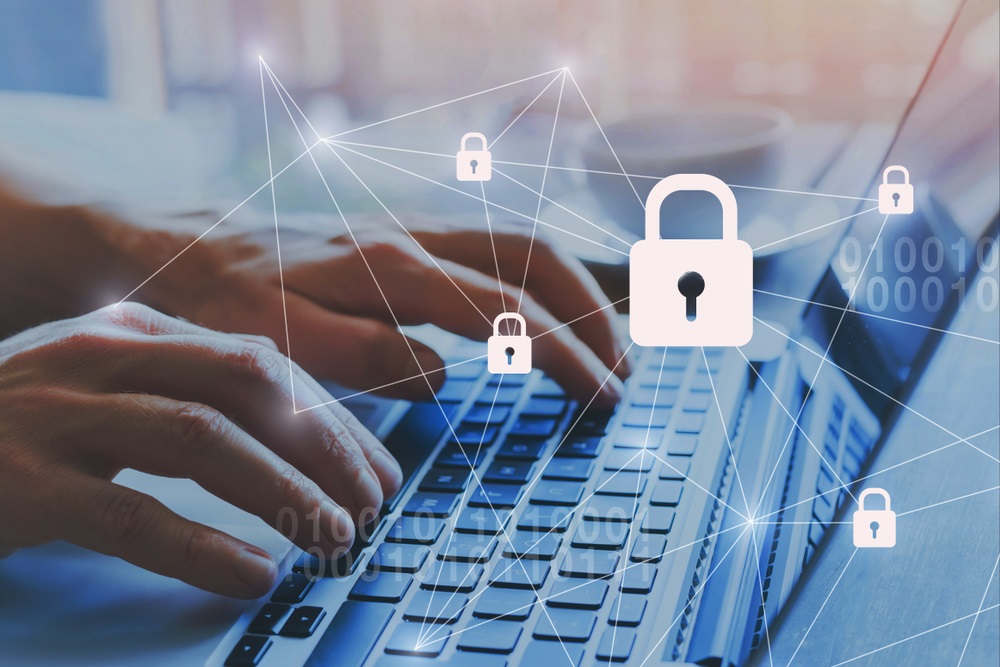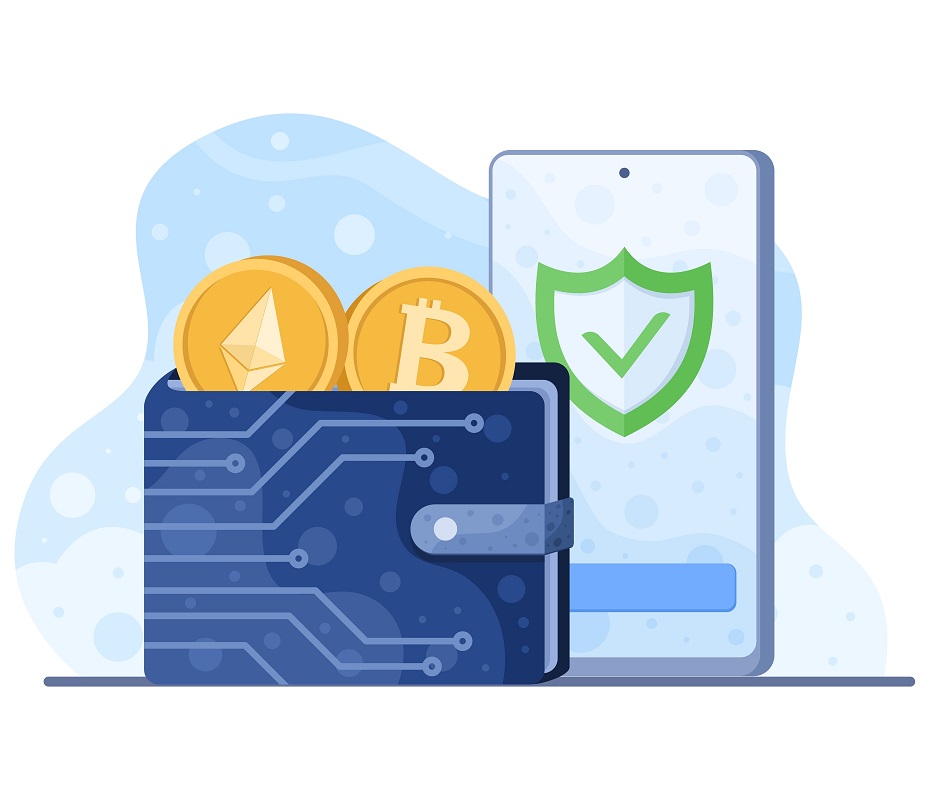What is Blockchain Security and How it is Securing Digital Assets
Blockchain, in the digital space, is no longer just a buzzword or novelty that’s whipped out to wow and dazzle the crowds. It’s a serious part of the discourse in the digital world, with many takers from across the aisle.
Young investors and solopreneurs, businesses, and now even government systems – all are integrating or working with blockchain in some capacity or the other. And this makes the conversation on blockchain security more important today than it has ever been before.
• For instance, take a look at cryptocurrencies or tokens. The amount that is spent globally on blockchain solutions is predicted to grow to $19 billion by 2024, with just stablecoins accounting for $113 billion as market capitalization.
• If there were no means to keep them secure, then the tokens could simply be stolen, re-created on a different wallet or even destroyed. Smart contracts will become hard to be trusted in whether they’ll fulfill the right set of actions without being altered.
• And all the bits of information about trades, transactions, and account holders will be open to instances of scams and theft.
It’s these possibilities that make blockchain and cyber security not just necessary but essential in the digital world. It's like a full-on risk management shield that keeps your blockchain network safe and sound.
Just like a professional cybersecurity team, it uses efficient frameworks, assurance services, and the best practices in town to ward off any silent attacks and fraudsters.
Key Aspects that Contribute to Security in Blockchain

According to IBM, using blockchain can help prevent more than $3 trillion in losses due to cybercrime by 2025. Because of how blockchain operates, it can be instrumental in reducing risks such as data breaches and cyberattacks.
Now how blockchain security works is that certain mechanisms in place are purposed to maintain the integrity and confidentiality of actions, data and any usage across the network. Such as:
• Cryptography
In the fascinating world of crypto and blockchain trends, it's like a secret language of super-secure codes that keeps everything locked up tight! These cryptographic algorithms are like magical keys, ensuring that all the data and transactions are 100% genuine and untouched by any sneaky tricksters.
Think of it as a VIP club where only the chosen ones with their special public keys can verify their identities and get access!
• Decentralization
The distributed nature of blockchain stands as a formidable knight, forbidding any single point of control from reigning supreme. This strategic design fends off the lurking menace of single points of failure, adding layers of resilience to the system's fortifications.
Such a formidable defence as blockchain security makes attackers' tasks extraordinarily difficult, as breaching the bulwarks and compromising the system demands a lot of effort and time.
• Immutability
Picture the blockchain as a digital fortress, guarding your data with an ironclad shield. Once your precious information is added to this unassailable fortress, it becomes virtually untouchable, as if shielded by an impenetrable force field.
How does it achieve this feat? Well, each new block in the chain carries a secret code, linking it to the previous block. This creates an unbroken chain of blocks, interlocked like an unyielding puzzle, safeguarding the data from anyone seeking to meddle with it.
• Consensus Mechanisms
The nodes on a blockchain network, much like in a democratic process, reach a consensus on whether a transaction is valid and also the state of the ledger - through nifty little mechanisms called consensus algorithms. Some of the algorithms typically used for blockchain security in this aspect include Proof of Work (PoW) and Proof of Stake (PoS).
PoW requires nodes to show their computational prowess by solving complex puzzles, and the one that cracks it first gets the honor of validating the block. On the other hand, PoS relies on a node's ownership stake in the network, allowing those with more significant stakes to play a leading role in the validation process.
• Regular Auditing
Conducting regular blockchain security audits is a vital practice to safeguard the integrity of the blockchain network. These audits serve as serious inspections aimed at uncovering any hidden vulnerabilities or weaknesses that may lurk within the system.
By detecting potential problems early on, the blockchain network can swiftly take corrective actions to address these issues before they evolve into major concerns. It's akin to preventative medicine for the blockchain, ensuring its robustness and resilience against potential threats.
These mechanisms help maintain trust and prevent issues like unauthorized access, fraud, and data tampering among applications of blockchain technology. Although blockchain technology is widely acknowledged for its security features, it is crucial to recognize that it is not invulnerable to attacks or risks.
As this technology continues to evolve, new security challenges may arise, demanding continuous attention and vigilance from both developers and users. There’s no permanent ‘blockchain security certification,’ and safeguarding the integrity and trustworthiness of blockchain networks requires a persistent commitment to staying informed and implementing robust security measures.
Avoiding Safety Risks with Blockchain Security Services

The use of blockchain technology has gained much prevalence in recent years. Industries such as the Food sector, healthcare, supply and logistics, and more have integrated blockchain networks and various applications that leverage its power to enable its services.
And these have made blockchain security risks a grave issue for these companies to tackle, as they can challenge the integrity and reliability of the blockchain solution, for example:
• 51% attacks.
A 51% attack is a critical security threat in a public blockchain network. In this type of attack, a malicious actor manages to control over 50% of the network's computing power.
With this dominance, the attacker can exploit the consensus protocol, which is the system that validates and agrees upon transactions across the network.
As a consequence of this control, the attacker gains the ability to perform malicious actions such as reversing legitimate transactions, spending the same coins twice (double-spending), or halting the confirmation of new transactions.
Essentially, the attacker wields an alarming level of influence, undermining the trust and integrity of the blockchain network and the assets.
• Endpoint security breaches.
User and node devices or systems interacting with the blockchain network are susceptible to a type of attack known as "endpoint attacks." In these attacks, hackers target and compromise these devices or systems, which can include wallets, browsers, servers, or applications.
To accomplish their malicious intentions, hackers employ various techniques, such as malware, which is harmful software that infiltrates devices to steal sensitive information.
Additionally, they may resort to phishing, where they trick users into revealing private keys, passwords, or other valuable data to bypass blockchain security.
• Smart contract vulnerabilities.
 Smart contracts function based on predefined rules and conditions, executing automatically when specific criteria are met. However, they might rely on external data sources or interactions with other contracts to operate effectively.
Smart contracts function based on predefined rules and conditions, executing automatically when specific criteria are met. However, they might rely on external data sources or interactions with other contracts to operate effectively.
If not adequately secured, these interactions can create potential entry points for attackers to exploit.
Hackers can leverage these vulnerabilities to obtain access and engage in malicious activities such as stealing the funds, tampering with data, or disrupting the network's normal functioning.
Steps to reduce or totally prevent these blockchain security issues from affecting one’s platform or blockchain network:
• Against 51% of attacks
Preventing and defending against 51% attacks require robust blockchain security measures and a strong, decentralized network. It highlights the significance of maintaining a diverse and distributed network of participants to safeguard against such nefarious activities and maintain the integrity of the blockchain system.
• Against Endpoint attacks
Endpoint attacks pose a serious risk to blockchain users, including the security of the overall network. To safeguard against such threats, it is crucial to maintain strong security practices, keep software and devices updated, exercise caution while interacting online, and implement strong cybersecurity measures to safeguard sensitive data and credentials.
• Against Smart contract attacks
To act against smart contract vulnerabilities, rigorous code audits, and thorough testing are essential. Implementing industry best practices for smart contract security and employing secure coding methodologies can significantly reduce the risk of potential attacks, ensuring the integrity and reliability of smart contract operations on the blockchain.
Blockchain Consulting: Secure your Digital Network and Assets
As per a report by McKinsey & Company, blockchain offers the capability to improve cross-border payments by up to 80% if implemented correctly.
Other sources and studies from the likes of IBM highlight its benefits in considerably reducing food fraud, supply chain costs and revenue losses. The benefits, as evident, are immense. But so are the security risks which number in the many.
At EDIIIE, we are committed to safeguarding your digital assets and ensuring the integrity of your blockchain operations. Our team is well-versed in deploying protective measures that will enable you to stay on top of potential threats and protect your investments.
Contact us today to schedule a consultation with our team. And don’t let your digital future to chance: Take charge of your business with the expertise of our blockchain development company.
Your Top Queries Answered: Understanding Blockchain Security
1. What is blockchain security?
Blockchain security refers to the practices companies take to ensure that the information recorded on the blockchain remains trustworthy and protected from unauthorized access or tampering.
This is crucial to maintain the network's credibility and build trust among participants, be it individuals, businesses, or organizations who rely on the blockchain for secure and transparent data management, finance, etc.
2. What are the common security risks for blockchain networks?
As seen in many blockchain networks and communities, we’ve got the infamous 51% attacks, smart contract vulnerabilities, endpoint attacks, private key theft, and those pesky supply chain attacks. Each of these bad boys comes with its own set of challenges, but no worries! There are specific security measures to tackle each of them head-on, and that will keep your blockchain safe and sound.
3. How can 51% of attacks be prevented?
Preventing a 51% attack is crucial for maintaining the security and integrity of one’s blockchain network. One effective defence is to foster a diverse and distributed network where no single entity holds such a substantial share of computing power.
Well-established blockchains often adopt this approach, making it more challenging for any single entity to compromise the network's consensus mechanism.
4. How can I secure my blockchain wallet?

Keeping your blockchain wallet secure is of paramount importance. To ensure its safety, you must utilize strong and unique passwords. Also, make sure that 2FA (two-factor authentication) is enabled for an extra layer of protection.
If you’re looking for something that’s a bit on the heavier side, then you can also consider using hardware wallets for enhanced security and offline storage of your digital assets.
5. What to consider when choosing from blockchain security companies?
When selecting a blockchain security company, you should keep in mind and assess their experience and track record in the industry. If possible, check their reputation and credibility among their peers and clients.
And most importantly, look into the range of services they provide to ensure they meet your specific security needs.






